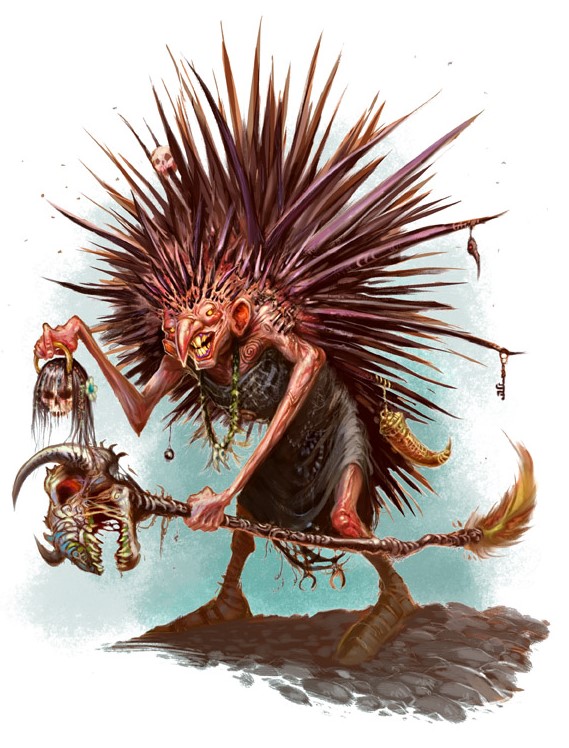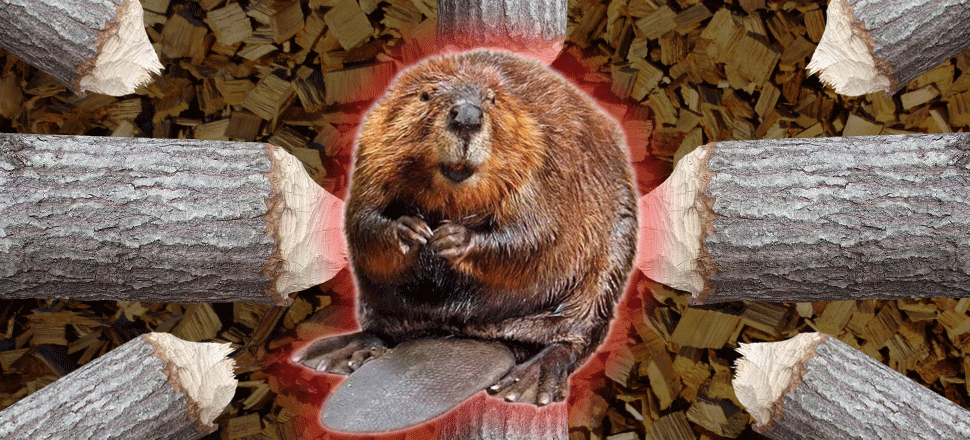The Pukwudjie for C&C
Every year for more than a decade, I’ve included Henry Wadsworth Longfellow’s Song of Hiawatha in my middle school literature curriculum. Today’s post is not the first time I’ve adapted creatures or characters from that classic poem for gaming purposes. For other examples, click here. And so, I return to lands around the Big-Sea-Water and revisit the pukwudjies, this time for use with Castles & Crusades.
The pukwudjies are mean-spirited fey creatures who live in coniferous forests in cold climes, often near lakes or coasts. Pukwudjies especially dislike humans, whom they harrass and endanger for sport. Evil pukwudjies delight in luring humans to their deaths.
Pukwudjies are shapeshifters. In their natural form, they resemble a diminutive, spindly-limbed cross between a humanoid and a porcupine. Their scalps and back bristle with thick quills. Their arms and legs are disproportionately long compared to their torsos. They wear simple clothes made from hide, and they decorate their quills with feathers, shells, and shruken skulls.
Number: 3-36
Size: Small (2-3 ft. tall)
HD: 2 (d6)
AC: 12
Saves: M
Move: 25 ft.
Attacks: By weapon
Special: Duskvision, Lure, Magic, Poison Arrows, Quills
INT: Average
Alignment: Any chaotic
Type: Fey
Treasure: 1
XP: 35 + 2
Combat: Pukwudjies avoid melee combat, preferring to use their spells and ranged weapons.
Lure: A pukwudjie can enchant a living creature within 100 feet. The target must succeed at a charisma check or become enchanted. Elves and half-elves apply their resistance to charm to this save. If the save is successful, the target is immune to that pukwudjies lure ability for 24 hours. Otherwise, the enchanted victim walks in the most direct possible toward the pukwudjie (even if the pukwudjie cannot be seen or heard). If the path leads into a dangerous area, the victim is allowed a second saving throw to resist the charm. If more than 100 feet separates the victim and the pukwudjie, the charm is broken. Otherwise, the victim can take no actions other than to defend themselves and move toward the pukwudjie.
Magic: Pukwudjies casts spells as a 1st-level druid with sufficient wisdom to gain an extra 1st-level spell. Typical prepared spells are (0-level) endure elements, first aid, and light, and (1st-level) entangle and pass without trace. They may use these spell-like abilities: invisibility (at will); magic stones (affects pine cones only); polymorph (self only, 1/day); or produce flame (3/day).
Poison Arrows: Pukwudjies coat their arrowheads with a numbing poison. A creature struck by a pukwudjie arrow must make a constitution check or suffer a cumulative -5 feet movement and a -1 penalty to AC. If movement is reduced to 0 feet, the creature becomes paralyzed. Rest restores lost movement and AC as if each reduction were a lost hit point.
Quills: When attacked from a flank or the rear with a one-handed melee weapon, any successful hit on a pukwudjie causes 1d4 points of damage to the attacker. A successful dexterity check modified by the attacker’s AC bonus from armor avoids this damage.




